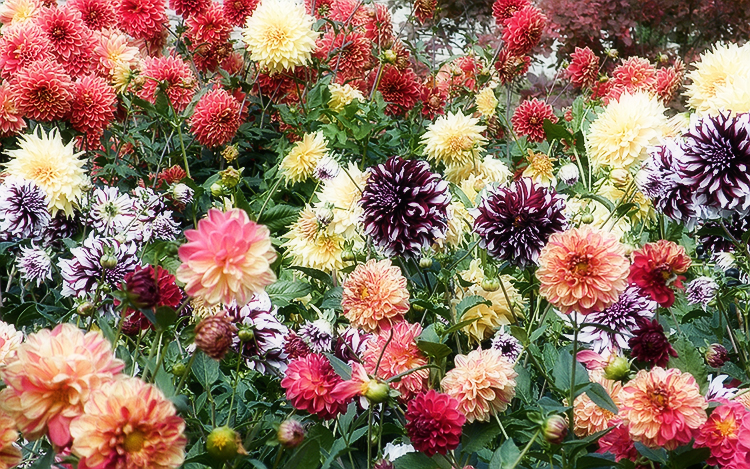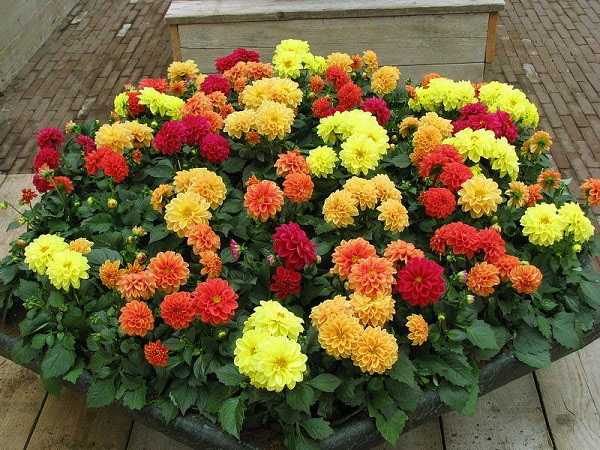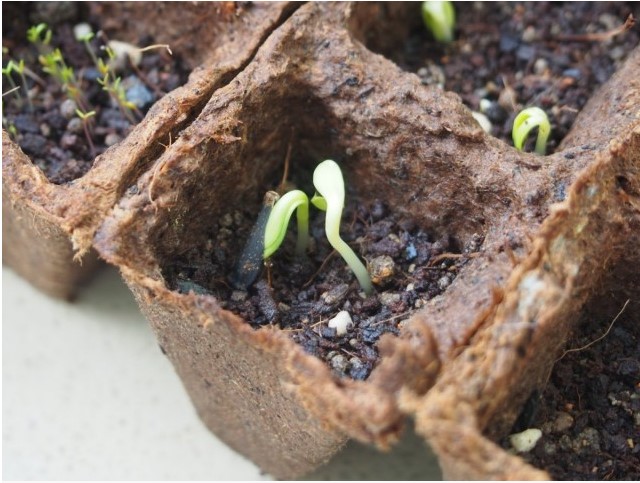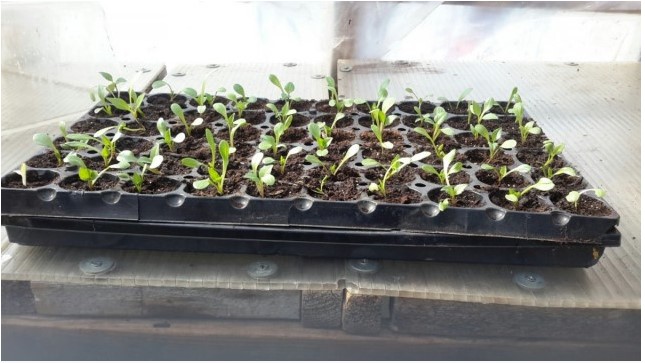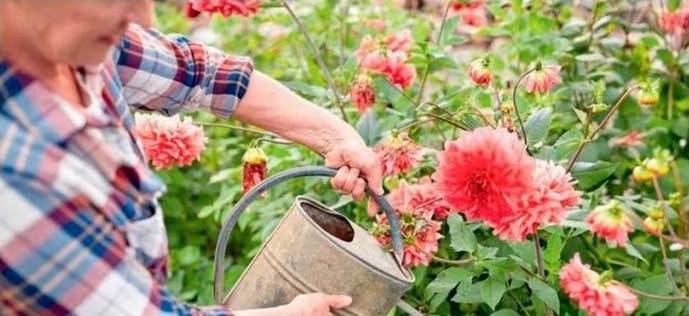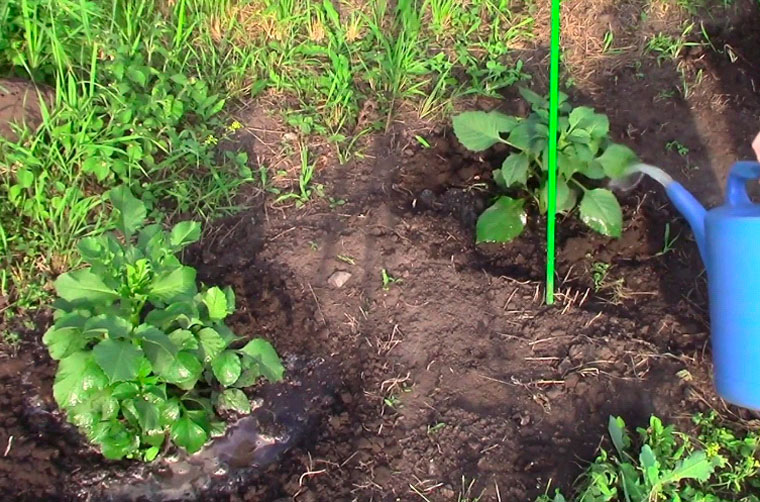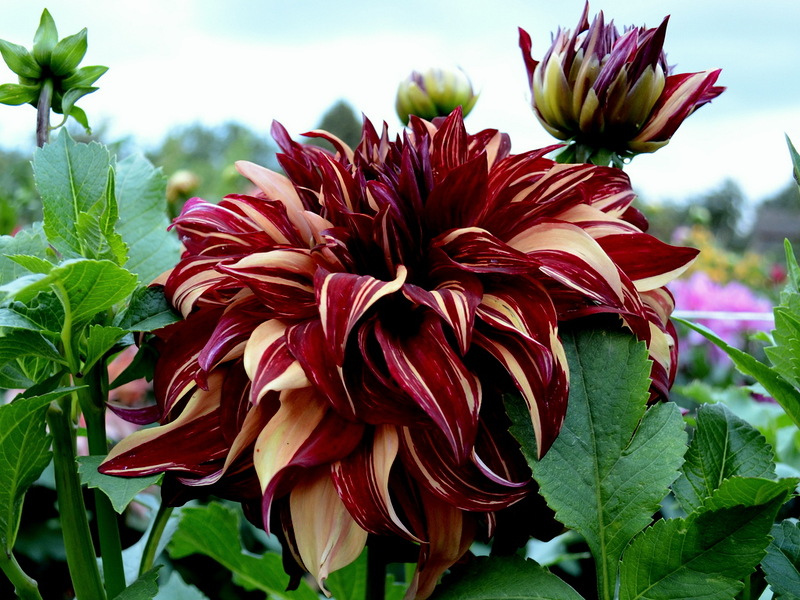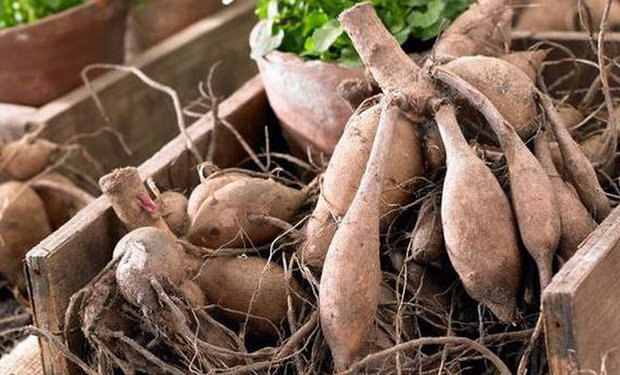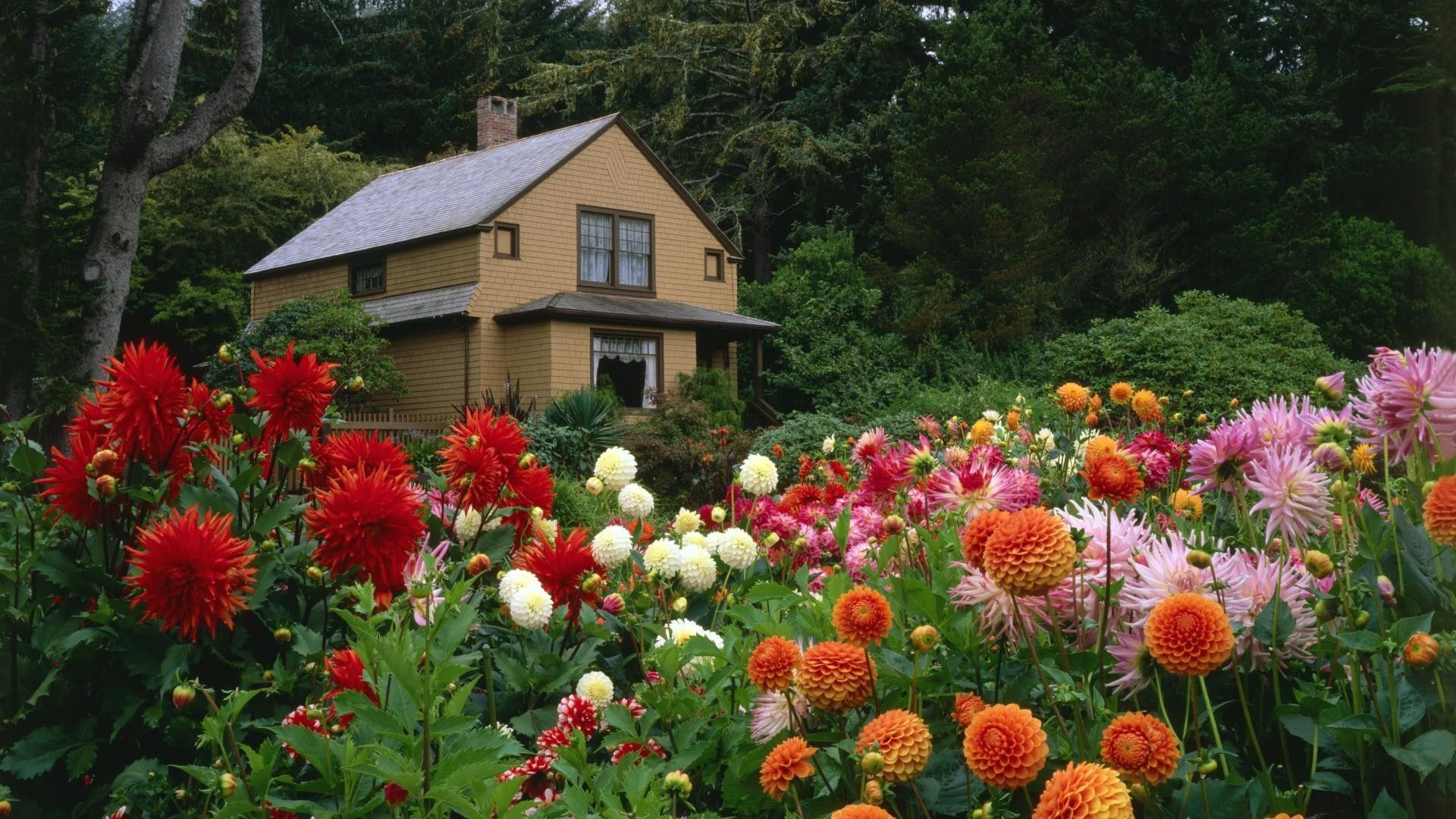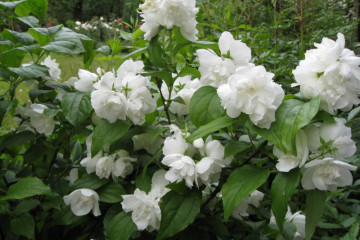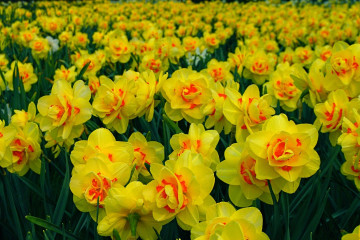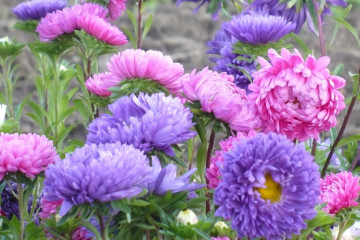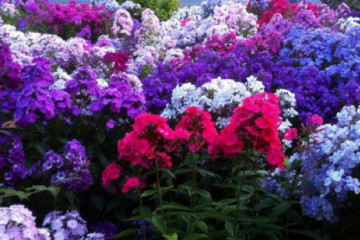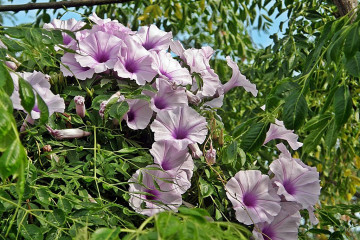Dahlias - planting and care in the open field
Content:
The culture received its name in honor of the ethnographer, botanist and geographer from St. Petersburg I. Georgi. There are 13 known plant species, which are divided into 15 thousand varieties. The crop has an attractive bush shape and is characterized by abundant flowering during the summer. To get beautiful blooming dahlias, planting and care in the open field must be done in accordance with certain rules.
Characteristics of dahlias: varieties and varieties
Conventionally, the culture can be divided into annual dahlias (planted in flowerpots to decorate verandas) and perennial dahlias (placed in gardens and flower beds). Each group has its own characteristics that relate to the principle of planting, appearance and care.
Perennial bushes are very tall and lush. They can grow in one place for more than 2 years. Annuals have miniature forms (usually a short grassy base), they are sown as a temporary decoration.
Another difference is the shape of the flower, which determines the main groups of varieties:
- Simple - consist of 1 row of petals and an open center. Outwardly, they resemble a colored chamomile. Basic varieties: Princess Marie Jose, Yellow Hammer, Orangeade.
- Anemonic - have several rows of marginal and inner petals. Such varieties as Lucy, Vera Higgins, Comet are combined.
- Collar - they have one row of marginal petals and internal, twisted shapes. Varieties: La Gioconda, Chimborazo, Claire de Luna.
- Peony. The name is fully consistent with the appearance. The most popular varieties are Symphonia and Fascination.
- Decorative group - represented by varieties David Howard, Thames Valley, Jocondo.
- Globular - Crichton Honey, Doreen Hayes and Esmondе.
- Pom-poms - differ in different colors, among which there is only a blue tint. Cultivars: Hallmark, Willo's Violet and Noreen.
- Cactus - Visit, Danny, Pirouette, Doris Day.
- Semi-cactus - Yellow Mood, White Swallow, Nantenan, Autumn Fire.
- Nymphaean - they are also called lotus-shaped because of the similarity with the flower of the same name. The main varieties are Geri Hawk, Genette and Brushstrokes.
The mixed group has the largest variety of varieties.
Planting a plant
Dahlias, planting and caring for which are carried out according to a simple scheme, bloom almost all summer until late autumn. To achieve a riot of colors, it is important to plant the flowers correctly.
Seed planting
Seeds are planted mainly annual dahlia. This herb has a neat aerial shape. The trunk reaches 30-40 cm in height. Such hybrids bloom profusely and for a long time, suitable for growing in flowerpots.
How to plant dahlias with seeds:
- Choosing a place. The culture is sun-loving, so you need to place it in an open area.
- Sowing is carried out in May. The plant loves warmth, so you need to be guided by the weather
- Land preparation. It is worth choosing loamy soil. Slightly acidic or neutral soil is suitable.First you need to add compost and mineral fertilizers.
- Seed soaking. They need to be soaked in a fungicide solution to protect them from disease and decay.
- On a flat surface, make grooves 2-3 cm deep at a distance of 30-40 cm from each other.
- Spread the seeds along the groove at a distance of 30-40 cm. Sprinkle the planting material with soil and water.
- To speed up germination, cover the bed with foil or glass. When the first shoots appear in 2-3 weeks, the shelter is removed.
When sowing seeds in a container, the procedure is the same. True, the laying can begin in March-April, since germination will be carried out in greenhouse conditions or indoors.
Planting seedlings
When planting seedlings, you need to choose exclusively sunny sites, but protected from drafts and wind. The soil must be pre-fertilized and well loosened. The sprouts are planted in late May or early June.
Seedling planting process:
- Prepare the wells. The depth and width should correspond to the size of the root system of the seedling. The distance between the grooves must be at least 40 cm.
- Lay the sprouts horizontally and dig in so that the root collar is covered with earth by 3-5 cm.
- Water the seedlings abundantly.
- Cover with foil until the temperature at night stops dropping below 10 ° C.
The flower grows quickly, so you need to constantly monitor the height of the film. Otherwise, the trunks will deform and will be located horizontally in relation to the ground.
Watering and loosening the soil
Caring for dahlias after planting consists in watering the plant and loosening the ground. How to do it correctly:
- When the aboveground part has a height of 10-12 cm, hilling must be done. Form a hill around the trunk. This will help to root better by launching additional shoots.
- Watering is carried out once a week, since the culture is drought-resistant. The ground should be soaked 30 cm deep. Artificial irrigation is stopped from mid-August.
- After each watering, you need to update the slide around the trunk and loosen the soil in the hole. This will help keep the root system from rotting and provide a normal flow of oxygen.
In order not to let the earth dry out, you can lay mulch in the hole. But you should not get carried away - the layer should be minimal. Periodically, you need to remove the mulch to ventilate and loosen the soil.
In addition to watering and caring for the soil, the formation of supports for the bushes remains an important rule. The base for the leash is driven into the ground even when planting seedlings. Do not forget about pruning off excess branches and leaves.
Reproduction methods
Dahlia can reproduce in five ways. Each option has advantages and disadvantages, and some are rarely used. Culture propagation methods:
- Division of tubers. The easiest option, which will preserve all the qualities of the mother bush. In the fall, you need to remove the tubers from the ground, wash, remove the dead roots and separate the tubers with your hands. Each tuber should have two buds as a result of division.
- Vaccination is not a frequent but very effective type of reproduction. Make a tapered hole in the old tuber. Sharpen a healthy twig of dahlias and insert into the tuber. Wrap the junction with cotton wool. Plant the graft in the ground.
- Sowing seeds. This breeding option allows you to get a completely new plant (maternal traits are not preserved). When the flower begins to fade, you need to cut it off and dry it indoors. Further, the planting material is collected and packed until spring.
- Cuttings.The method makes it possible to obtain strong plants with high disease resistance. In early March, healthy tubers are planted in a box. Appropriate watering and maintenance is carried out. When the tubers grow, a stalk will appear. After 2-3 internodes appear on the handle, it can be cut off. Place the sprout in a container of sand.
- Disputes make it possible to get a new variety. Cut off the flowering branch and plant in a separate pot. Gradually reduce watering and allow the twig to dry. For the winter, place the container in a room with a temperature of 6 ° C. In the spring, resume watering in order to plant a bush in open ground in May.
Thanks to different propagation methods, you can get not only a large number of young bushes, but also completely new varieties.
Top dressing and fertilizers
In order for the bush to bloom luxuriantly and not be attacked by pests, periodic feeding should be done during the growing season. The procedure is done at least 2 times a month. In order for the plant to receive all the necessary substances, it is necessary to alternate the use of mineral and organic fertilizers.
An infusion of mullein, chicken droppings, ammonium nitrate is used as organic fertilizers. The bush will grow full-fledged if superphosphates or potassium fertilizers are added when the first two buds appear. You also need to plant the shoots in well-fertilized soil. It is important not to overdo it with fertilizers, so as not to ruin the flower.
Plant transplant
You need to replant the plant every 3 years or completely replace the soil in the hole. This will help protect the plant from diseases and pests. Spring is the ideal time for the procedure. The root system has not yet entered the stage of active growth, so there will be no problems with rooting in the future.
For a transplant you need:
- Dig out the tuber, process the roots.
- Soak the transplant material in an antiseptic or wash away from the old soil.
- Move to a new hole and dig in.
- Water the transplanted plants.
Dahlia pruning
In order for the bushes to have huge flowers of bright colors, you need not only to constantly take care of feeding, but also to be able to form a bush. Cropping is the most efficient option:
- A maximum of three stems are left in the bush.
- On the peduncles, extra buds are torn off, leaving only 1-2.
- Withered and faded buds are also removed.
- In tall varieties, side branches are also cut off.
The formation of the bush continues all summer, from the moment the flower stalks appear until late autumn. Additionally, the bushes need to be tied up and fastened to the support.
Pests and diseases
Proper care, timely watering and feeding prevent pests from appearing, but sometimes they still overtake the plant. Most often the garden with such flowers is visited by slugs and earwigs.
To protect the bushes on hot days, they are sprayed with insecticidal preparations. This will help keep the leaves and flowers free from caterpillars, thrips, and ticks.
Most of all, dahlias are bothered by aphids, which populate the rosettes of the leaves, are located on the stems and the back of the leaf plate. You can save yourself from a pest only by using a soapy solution as a sprayer.
Flowering period and care during this period
Dahlia flowers are not only beautiful but also demanding. During the flowering period, the plant needs special attention.
How to care for dahlias during the flowering period:
- Double the amount of watering.
- Remove wilted buds and dry leaves.
- Tear off excess buds on a flowering brush.
- Fertilize with organic fertilizers.
Other needs may arise from the characteristics of the variety.
Preparing for winter
In September, the stems begin to wilt, and after the first frost they change color. This is the perfect time to clean up.
To prepare a flower for wintering, you need:
- Cut off the stems. Dig up the root.
- Remove excess soil from the tubers, rinse them and immerse them in a potassium permanganate solution for 30 minutes.
- Find wilted scions and cut them off. Sprinkle the sections with activated carbon powder.
- Dry the tubers and put them in wooden boxes. Place the crop in a room where the temperature does not exceed 10 ° C.
- If the winter is harsh, then the roots are left in the same room. If the frosts are light, then you can take the boxes into the cellar or shed.
If sprouts appear on the roots, you need to know how to preserve the sprouted dahlia before planting. To do this, you need to pour sawdust into the box and cover the container with a cloth.
Use in landscape design
Dahlia is a very beautiful and bright flower, therefore it is actively used in landscape design. Flowers are planted in flower beds, flower beds are formed from them, used to create hedges.
The culture goes well with almost any tall flowers and shrubs. Annual varieties can be planted in flowerpots to decorate the territory and open spaces. So the dacha will be full of different colors, which will change from mid-summer to the end of September.
Growing dahlias, as well as their reproduction, are simple procedures. The culture is very unpretentious and adapts perfectly to any conditions. But in order to achieve lush flowering, the plant needs to pay more attention: to feed, irrigate and water.

